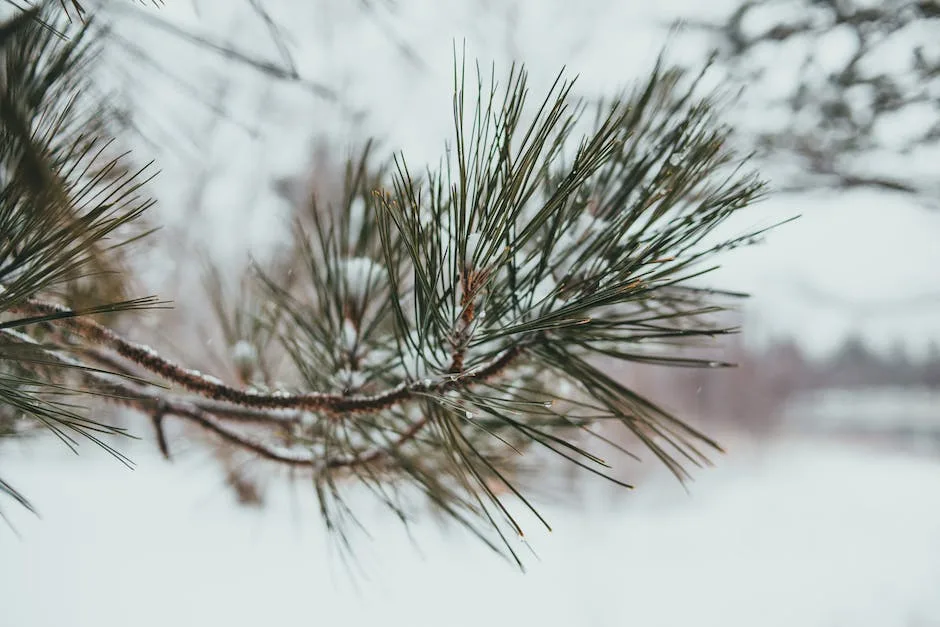Pine trees drip sap all year round, but the longest they tend to drip is in the spring. The sap is not just water; it contains sugars, which attract insects.
Pine trees drip sap for a few weeks to a few months after they are cut down.
How do you stop pine trees from dripping sap?
Pruning sealant is a great way to protect your trees from disease and pests. By sealing the wounds on your trees, you can prevent them from getting sick and dying. Pruning sealant is available in both spray and brush-applied liquid forms. You can find it at most home improvement stores.
The rising temperature creates pressure in the tree generating the sap flow. This is basically a transfer of the sap from the tree above the ground and the root system below the ground. The sap generally flows for 4 to 6 weeks, with the best sap produced early on in the sap-flowing season.
Why is my pine tree dropping so much sap
Pine tree sap loss can be excessive and result from various injuries. These include broken branches from a storm or accidental cuts made by weed whackers. Borer insects can also cause this issue by digging holes in the tree. If the sap is dripping from multiple holes in the trunk, it is likely due to borers.
Sap production is highest in the spring and early summer, when trees are beginning to bud or the season is changing. However, sap can be produced year-round. The most sap will occur during the spring and early summer.
What time of year do trees stop dripping sap?
This is because during winter, the trees are dormant and there is less water available to them. As spring approaches and the weather gets warmer, the trees start to wake up and the sap starts flowing again.
Sap leaking from a tree is usually a sign of damage, disease, or pests. If you see sap oozing from a tree, inspect the tree for wounds or holes. Bacterial canker is a common tree disease that can be caused by pruning, cracks from a freezing winter or sheer impact.
Can you wash off tree sap?
If you find yourself with sticky sap on your skin, there are a few things you can do to remove it. First, try rubbing some nail polish remover or an alcohol-based hand sanitizer into the sap. This will help to loosen it up. Then, wash the area with soap and water to remove any remaining residue. If you don’t have either of those products available, you can try using dish soap or vegetable shortening.
If you are collecting sap from maple trees, it is important to store the sap at a temperature of 38 degrees Fahrenheit or colder. The sap should be used within seven days of collection, and boiling the sap is recommended to eliminate any possible bacteria growth. If there is still snow on the ground, you may keep the storage containers outside, located in the shade, and packed with snow.
What happens when you touch tree sap
Thenectandra witheringii, commonly known as withering’s tree, is a large tree in the family Simaroubaceae. The milky sap causes blistering, burns, and inflammation when in contact with the skin, mucous membranes, and conjunctivae. Smoke from the burning wood may injure the eyes.
White pine decline is thought to be a result of stress, especially for trees planted outside the species’ requirements. Early symptoms of decline include yellowish-green or browning needles that drop prematurely and thin out the tree’s canopy. Bark on the branches may appear shriveled or wrinkled. Once a tree begins to decline, there is usually no effective treatment and it will eventually die. Removal and disposal of affected trees is the best management option to prevent the spread of the decline.
When should you worry about a pine tree?
Tree diseases can be difficult to spot, but one telltale sign is brown spots or brown stripes on pine needles. If you see any brown spots on your pine needles, it’s important to examine them closely to see if they are indicative of a larger problem. Brown clumps in the center of needles are particularly concerning, as they could indicate that your tree is suffering from a serious disease. If you suspect your tree might be sick, it’s important to consult with a professional to get a diagnosis and treatment plan.
There are several telltale signs that a pine tree is dying, which include needle discoloration, broken branches, spots and cankers, bark shedding, early or frequent needle drop, and excessive tree sap. If you notice any of these signs, it’s important to take action immediately and cut off any affected parts of the tree. You should also water the tree more frequently to try to keep it alive.
Does tree sap fall more at night
Sap flow is the process by which water and nutrients are transported from the roots to the leaves of a plant. It is a continuous process that happens throughout the day, but it is most active when temperatures are warm. However, sap can also flow at night if temperatures are above freezing.
Evergreen conifers shed needles each year, but when it happens and how many needles are dropped varies by conifer species. Most trees start shedding old needles in late summer and continuing into fall; for others, it happens during spring and summer.
Needle drop is a normal process for all evergreen conifers. At the end of their life cycle, needles turn yellow or brown and drop off. In some species, such as Douglas fir and Western hemlock, all the needles on a branch may turn color and drop off at once. In other species, such as pines and spruce, needles may drop over the course of several months, a few at a time.
Why is my tree dripping sticky stuff?
The sticky film that covers your plant’s leaves is called honeydew. It is the waste that aphids and several other sap-sucking insects leave behind after snacking on sap. Along with tree leaves, it can drip onto branches, patios, driveways or any areas under the canopy.
Sugar maples are the most productive when it comes to sap production, but all maples can produce sap that is edible and varies in sweetness. Some might find the sweetness more intense while others will enjoy the subtlety of it. No matter what your taste preferences are, it is definitely worth trying out different types of maple sap!
Do pine cones mean a tree is stressed
When a pine tree produces more cones, it is generally a sign that the tree is under stress due to a dry or changing climate. The tree is trying to increase its chances of reproducing by producing more seeds. This is a matter of survival for the tree – the drier and tougher the season, the more important it is for the tree to reproduce.
The study showed that sap can be obtained from tapped maple trees during the fall, but the amount and sugar concentration are lower than what is obtained during the spring tapping season. This is likely due to the fact that the trees are preparing for winter and are not producing as much sap.
What does it mean when a tree is full of sap
Sap leaking from a tree’s bark can be an indication that the tree is sick or damaged. The bark beetle is the most common culprit for these issues, but other pests or diseases may be to blame. If you see sap leaking from your tree, it’s best to have a professional check it out to ensure its health.
Pine sap is an effective natural antiseptic, anti-inflammatory, and astringent. It is also a helpful treatment for wounds and can be used as a bandage. The softer sap can be chewed like gum for colds and sore throats. Pine sap can also be used as a waterproofing agent for seams in boots, boats, and containers.
How do you fix a sappy tree
The best way to control bleeding sap is to prune at the right time for that particular species of tree. In general, you should prune deciduous trees in late winter and early spring (February, March, and April). Though they may bleed, the trees will not be hurt as the flow of sap will slow and finally stop.
If you have dish soap, dawn dish soap works best, but any kind of dish soap will do. Just rub it into your hands and rinse it away with warm water.
Does tapping a tree to remove sap harm the tree
Tapping a tree does create a wound, but it is a wound from which the tree can readily recover and does not endanger the health of the tree. Commercial syrup producers are able to tap trees for decades without adversely affecting the health of the tree.
Tree sap is mostly made up of sugar and water, but there is something else in there that you only know about if you’ve ever used it to start a fire or as waterproofing. That something else is what makes it so difficult to clean off of glass; even Windex and other glass cleaners can’t dissolve it.
Warp Up
Pine trees drip sap for approximately six to eight weeks in the spring.
Pine trees drip sap as a result of injury. The sap flows from the cut or damaged area of the tree to the ground where it can be a nuisance. The sap can drip for a few days or up to several weeks, depending on the size of the tree.
Mark Hoffman is a dedicated arborist and tree care specialist with over a decade of experience. His love for trees began when he visited Yosemite National Park as a teenager and was awestruck by the giant sequoias. Mark pursued his passion by studying forestry at Michigan Technological University, where he earned a Bachelor of Science degree.
Since then, he has worked tirelessly in the field of arboriculture, helping to preserve and protect trees in his community. His expertise and dedication have made him a respected leader in the industry and a valuable resource for anyone seeking advice on tree care.
